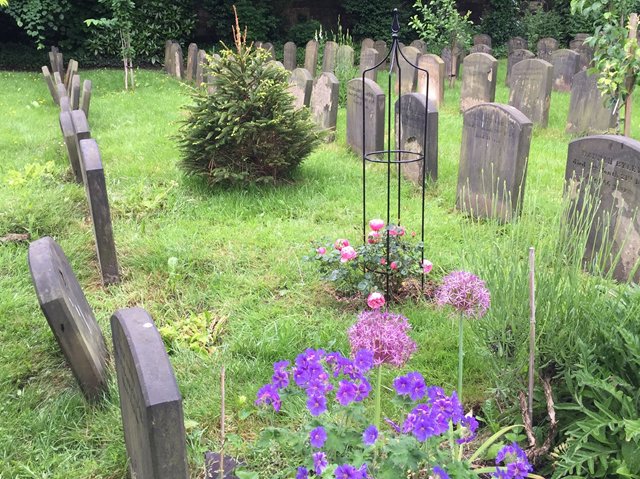Tucked away behind Arundel Avenue alongside Bethel Grove is a Quaker Burial Ground.
In 1791 the Liverpool Quakers built themselves a new Meeting house on Hunter Street which runs along the back of the Liverpool Museum, under the shadow of the flyover. This remained their home until 1941 when it was destroyed by a bomb. But long before 1941 the burial ground attached to the Meeting house had fallen into disuse because, in 1854, the Meeting received an order from the Privy Council forbidding it to make any more interments there presumably it was felt to be a health hazard in a densely populated district in the middle of a cholera-prone town.
It took quite a long time for the Quakers to find a plot of suitable size reasonably close to the town but in 1859 they found one on what at first they refer to as Smithdown Lane though that name quickly gives way to Smithdown Road in the Minute Books. Toxteth Park Cemetery had opened nearby in 1856 but otherwise it was outside the built-up area of Liverpool. The Privy Council order was quite strict that the new burial ground should be at a distance from housing. The plot had a frontage of 80 yards on Smithdown Lane and extended back from this for about 100 yards. The Quakers paid £1200 for the land, with a dwelling house and barn on it and they set about having it drained and levelled.
The Quakers raised the money to pay for the burial ground by selling a previous Meeting house and burial ground which they still owned in Hackins Hey in the old part of Liverpool between Dale Street and Tithebarn Street. All the human remains were removed and reburied on the new site.
In early 2013, the Liverpool Quakers approached The Avenues Neighbourhood Network (TANN) to discuss opening up the Burial Ground for community use, and a group of hardy volunteers was formed to turn the previously run down cemetery into a beautiful community garden, which was opened on 15th June 2014.
Most of the information above has been supplied by the much missed archivist John Highfield of the Liverpool Preparative Meeting and is based on the 19th and 20th century Minute books of the Liverpool Preparative Meeting, the Quaker congregations monthly business meeting.

